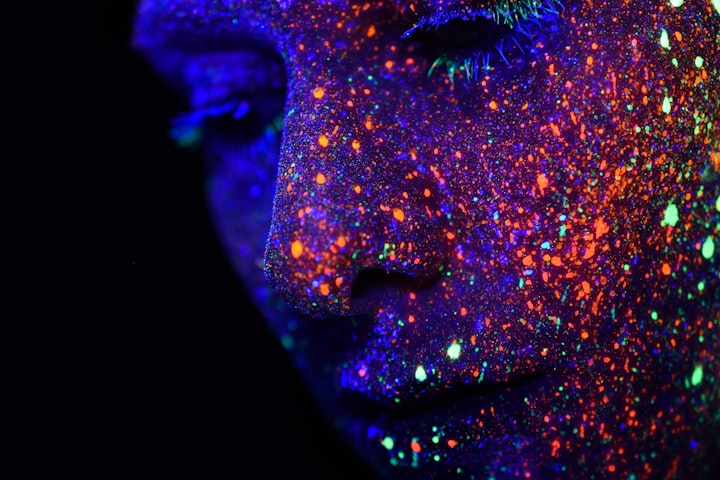The Great Designer
Ambition—that is what drove the man who sealed the human soul in a glass case with a wireless connection. The Earth was a paradise lost, an overhead cost to his pursuit to correct humanity’s flaws.

The game of life was almost over. After 300,000 years of famine, flood, and war, it was our minds that would atrophy the species to the end of existence. The brain is its own kind of carnivorous predator. It is bloodthirsty for the flesh of realized ambition.
Ambition—that is what drove the man who sealed the human soul in a glass case with a wireless connection. The Earth was a paradise lost, an overhead cost to his pursuit to correct humanity’s flaws.
Everybody called him the Great Designer.
He ruled information. We prayed wisdom ruled over him. We were all content. Data, information, power. Distraction, distraction, distraction. We wanted perfection, a wish synonymous with oblivion. One man’s mind controlled the world's limitations. All other boundaries collapses after the invention of cloud-space, a simulated reality. To many, he became a god.
In the archives, I saw the Great Designer’s announcement. There was a convention in Palo Alto. All the great minds came together to share their latest innovations. The Great Designer took the stage, reaching 80 million views on livestream. The world wad never the same again.
"There is a problem but I have a solution," the Great Designer said on a live stream, which reached 80 million viewers. He gestured to a matte black cube on a white marble pedestal on the screen beside him. “I present to you the latest of our innovations: the NITEOWL.”
From the box, the Great Designer removed an unusual virtual reality headset. The headset resembled the white heart-shaped face of a barn owl.
"The NITEOWL is a first-class ticket to utopia. Right before our eyes, a place of infinite escape. Beautiful landscape free of conflict and pain," he continued.
The energy required to power this heaven, it turns out, was equal to the 44 terawatts trapped in the Earth’s core.
Within a decade of the project's implementation, the consequences became harder to ignore. One year after the project launch, temperatures began to oscillate.
In Lahore, temperatures dropped to -41°F, leaving entire families frozen like statues in the snow. Images of such events were removed, forbidden in the Great Designer's digital utopia.
Some began to question his project. Employees of the company came forward to confirm the suspicions of the public. They soon formed a small resistance group. They came to see the Great Designer's plan for what it was, and that tearing life apart. They called themselves "The Brakemen" and demanded the project to stop in its tracks.
“Doubt is treason against the human condition,” said the Great Designer when opposed. “Progress is the only way forward.”
Still, many couldn't face what was ahead.
The Great Designer insisted that there were no deaths because he resurrected them. He used the data they left behind in the cloud-space to bring the dead back to life. He said to stand in his way was to deny eternal life. And so, the drilling continued. And the temperature continued to rise and then so did the seas.
The Great Designer finally took notice when a regional data center malfunctioned during a heatwave in Los Angeles. When temperatures reached 141°F, the servers shutdown for hours as hundreds died in the heat. This prevented them from uploading in the cloud-space. They were unable to recover the soul files for those that passed.
The Great Designer vowed to never let such a thing happen again. The company ran an analysis of the optimal place on the planet to build a Universal Data Center. The result: Oymyakon, Russia, where the winter temperature average was −58°F.
The town was near the R504 Kolyma Highway, running along what remains of the Siberian forced labor camps. They called it the Road of Bones due to the number of workers' deaths associated with the project. For those that died—starving, exhausted, and freezing—their bodies were again repurposed. Their bones became bricks, their flesh became mortar. Their bodies became that road of nightmares leading to nowhere.
The Great Designer pre-selected workers to complete the Universal Data Center. He analyzed the behavior of those in the cloud-scape and selected people with "negative histories." The algorithm classified them as low-priority uploads, placing them at the back of the line to the afterlife. People called them "corruptibles", souls unworthy of conversion to the virtual afterlife.
It took three weeks to complete construction of the Universal Data Center. It is unclear how many may have died.
At the opening ceremony, the Great Designer unveiled the latest of his innovations: the visceral transmitter. This device let a living body serve as a conduit sensation vessel for the dead. The company made a single version of the device.
"Unity is easier to maintain under one body," The Great Designer mused. "Universal experience is synonymous with peace."
Some embraced the harmony of the universal body. Others felt lost, no center of control. The young often decided not to grow up, dying in favor of virtual eternity. The planet continued to grow warmer each year. Mother Earth was unrecognizable to her children and they began to lose hope.
They called them "voluntary uploads."
It wasn’t until much later that we realized that you never grow up in the virtual world. You stay as you were, as you are, as you’ll be.
“By accepting death, we have cheated death,” The Great Designer said. “The fountain of youth is here.”
Heaven became a place for children over night. Voluntary uploads
surpassed involuntary uploads into the cloud-space for the first time. If there was a flaw in the Great Designer’s plan, that was it. The dream of living, untethered from the vessel of life, which itself cannot sustain. Soon, there would be no one left willing to endure the suffering of life. Without this visceral experience, humanity is a faint whisper of an idea.
The company analyzed the living for any female corruptibles. My mother was the youngest one, nineteen. The Great Designer offered her a path out of purgatory in exchange for a cell, an ovum.
With it, he decided to grow a human son in a lab attached to the universal data center.
They ran an analysis of my biometric data from conception to age seven. From it, they developed a plan of optimal conditions to hold me at the “stasis of immortality,” as they called it.
I was to never open my eyes unless I was wearing the NITEOWL goggles. There were glimpses of light and color in the real world that I could remember. I remember how beautiful things were, but it had also been quite painful.
The last time it snowed in Oymyakon, one of the scientists had lifted me from the bed and brought me out into the cold. She lifted the goggles, a rush of frigid white filling my senses.
"He called these the NITEOWL because owls are supposed to be wise," the woman had said gently to me as I took in the scene. "But in Russia, the owl is a foolish animal, incapable of seeing the light."
The researcher was removed from the project immediately. I was never the same after that—and the Great Designer knew. There were changes in me that were perceptible to the machines I was enmeshed in.
I looked for her in the cloud-space, but she was neither among the transmissibles nor the uploaded. I assumed the worst for her.
I also knew full well this “worst thing” was inevitable but incomprehensible to me. I knew there were things outside the cloud-space, a life behind the NITEOWL.
“We should’ve killed her in the beginning, sir,” a researcher assured the Great Designer. “All data points indicated trouble. But you’re compassionate, sir, too compassionate.”
"It's hard to keep a mother from her child," The Great Designer said. "I see now I made a mistake."
I never thought about the woman again until the last days of the Great Designer's life. His body survived the earth for 94 years, but he had lived almost only in his own head. They removed the transmitter from his head and deposited it in mine. I became the inheritor of all human wisdom contained within the universal data center. They finalized his upload and he was welcomed to his permanent home in the cloud-space.
Shortly after, the remaining members of the research team opted for early upload. They were followed by the remaining employees of the company, and then their families. There was no more reason for individual life as long as someone kept breathing, a body alive to feel while the others dream.
I was alone, growing like a plant in a greenhouse while the cold tundra melted away around me for years. Even though I was among the others in the cloud-scape, I felt completely alone. I winced each day at the pain of my wasting body. I was shunned for knowing the experience of pain, a direct affront to perfect world. I could peer into any soul at any moment and see what things looked like from their point of view—how they felt and who lived there.
But still, there was something missing—something I couldn't figure out.
It wasn't until after everyone else had uploaded that I realized it: the memories we keep our entire lives may not be enough to sustain us forever. There needs to be an attachment to life to continue existing.
Even in this state, my brain has deteriorated with age. It became difficult to flip between every memory of every person, from childhood through death. Those memories fade faster than they are formed, especially near the end.
The Great Designer was a brilliant, but he didn't understand the meaning of living: our essence is in our experiences and memories. How could an algorithm interpret the human soul? That's something that should only come to someone through experience alone, which should not be taken from you. The body is a faulty vessel, but it’s better than nothing at all.
We once believed that humanity lived side by side with nature. We failed to honor the dignity of Mother Earth, our final refuge in the universe.
I am imprisoned by the NITEOWL, sentenced to the cloud-scape. I wished I could look out again at the blinding white snow, like my mother showed me long ago. How foolish we all were.






Comments
There are no comments for this story
Be the first to respond and start the conversation.